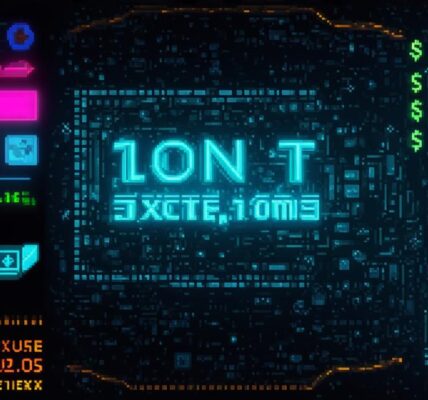Introduction
Developing a video game idea can be an exciting and rewarding process. However, it is not always easy to come up with a concept that will resonate with players and generate interest. In this article, we will provide a step-by-step guide on how to develop a successful video game idea, taking into consideration various factors such as market trends, player preferences, and technical feasibility.
Step 1: Brainstorming and Conceptualization
The first step in developing a video game idea is to brainstorm and conceptualize the basic concept. This involves coming up with a rough idea of what the game will be about, such as the setting, characters, or mechanics. It is important to be creative and think outside the box during this stage, as this will help generate a unique and innovative idea.
Case Study: Minecraft
One example of a successful video game that was developed through brainstorming and conceptualization is Minecraft. The game’s creator, Markus Persson, came up with the idea after watching a documentary about building blocks and real-time strategy games. He then combined these ideas to create a sandbox-style game where players could build their own worlds using various materials.
Step 2: Market Research and Analysis
Once you have a basic concept for your video game, it is important to conduct market research and analysis to determine if there is a demand for this type of game. This involves analyzing the current gaming market trends, player preferences, and competition. You should also consider factors such as target audience, pricing, and distribution channels.
Case Study: Angry Birds
Another successful example of market research and analysis in video game development is the creation of Angry Birds by Rovio Entertainment. The company conducted extensive market research to determine what types of mobile games would appeal to their target audience. They also analyzed the success of other casual mobile games to identify areas for improvement and innovation.
Step 3: Technical Feasibility and Development Planning
After conducting market research and analysis, you should then evaluate the technical feasibility of your video game idea. This involves assessing the resources required to develop the game, such as hardware, software, and personnel. You should also create a development plan that outlines the various stages of development, including concept art, prototyping, programming, testing, and launch.
Case Study: Uncharted
The development of Uncharted, a popular action-adventure game series by Naughty Dog, involved extensive technical feasibility planning. The team had to develop a proprietary motion capture system to create realistic character movements and animations. They also had to optimize the game’s performance for various hardware configurations to ensure a smooth gaming experience.
Step 4: Marketing and Promotion
Developing a video game idea is only half the battle; you also need to market and promote your game to attract players and generate interest. This involves creating a marketing plan that outlines the various channels for promotion, such as social media, advertising, influencer partnerships, and events. You should also create a compelling trailer that showcases the game’s key features and highlights its unique selling points.
Case Study: Fortnite
Fortnite, a battle royale game developed by Epic Games, is an excellent example of effective marketing and promotion. The company used various channels to promote the game, including social media, influencer partnerships, and in-game events. They also created a compelling trailer that showcased the game’s unique features and gameplay mechanics.
Step 5: Launch and Post-Launch Support
Finally, after developing your video game idea, conducting market research and analysis, evaluating technical feasibility, and promoting the game, it is time to launch it in the market. However, this is not the end of the development process. You should also plan for post-launch support, which involves providing updates, bug fixes, and content updates to keep players engaged and interested in the game.
Case Study: The Witcher 3: Wild Hunt
The launch of The Witcher 3: Wild Hunt by CD Projekt Red was a massive success, with over 10 million copies sold within the first month of release. However, the company also provided extensive post-launch support, including updates, bug fixes, and content expansions that kept players engaged and interested in the game.
Conclusion
Developing a video game idea can be a challenging and rewarding process. It involves brainstorming and conceptualization, market research and analysis, technical feasibility planning, marketing and promotion, and post-launch support. By following these steps and using real-life examples, you can develop a successful video game idea that resonates with players and generates interest in the gaming community.
FAQs
1. How long does it take to develop a video game idea?
The time required to develop a video game idea can vary depending on the complexity of the concept and the resources available. However, it typically takes between six months to two years to complete the development process.
2. What are the key factors to consider when developing a video game idea?
When developing a video game idea, you should consider various factors such as market trends, player preferences, technical feasibility, and post-launch support. You should also conduct extensive market research and analysis to determine if there is a demand for this type of game.
3. Can you make money from developing a video game idea?
Yes, it is possible to make money from developing a video game idea. However, the success of a video game depends on various factors such as quality, marketing, and promotion.
4. What are the different types of video game development?
There are several types of video game development, including 2D and 3D graphics, programming, game design, art, animation, sound, and testing. Depending on your skills and experience, you can specialize in one or more areas of video game development.
5. How do I find a publisher for my video game idea?
To find a publisher for your video game idea, you should first conduct market research to determine if there is a demand for this type of game. You can then create a pitch document that showcases your concept, target audience, and marketing plan. You can also attend gaming conferences and events to network with potential publishers and investors.





